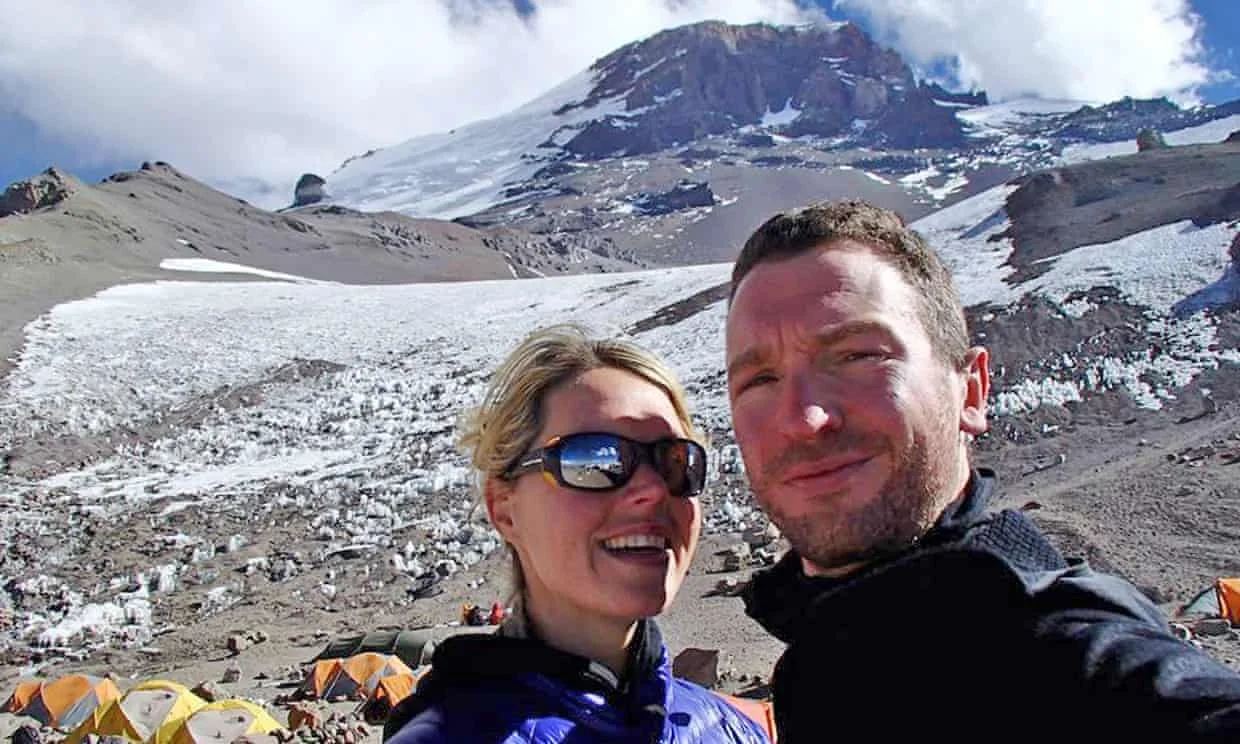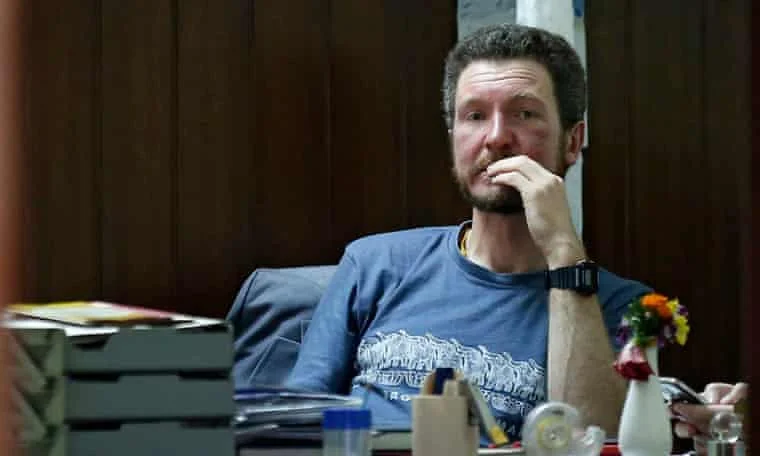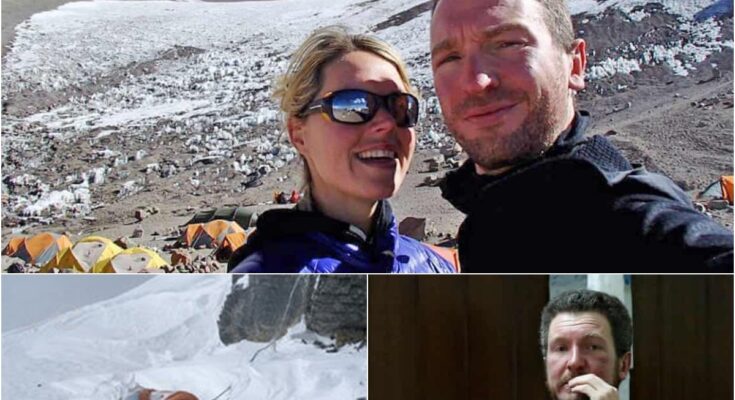In May 2016, the climbing world was rocked by the tragic death of Maria Strydom, a 34-year-old Australian university lecturer, on Mount Everest. Her husband, Robert Gropel, initially mistook her exhaustion for a temporary setback, not realizing she was battling deadly altitude sickness in the treacherous “death zone” above 8,000 meters. In a heart-wrenching interview with Australia’s Seven Network, Gropel shared the agonizing decisions that led to his wife’s death, sparking widespread discussion on platforms like Facebook about the risks of high-altitude climbing, the emotional toll of loss, and the human cost of chasing dreams. This story of love, ambition, and regret on the world’s highest peak is a sobering reminder of Everest’s unforgiving nature. Let’s explore the details of this tragedy, the dangers of the death zone, and why it resonates so deeply with audiences.

Maria Strydom and Robert Gropel. Strydom died on Mount Everest after suffering from altitude sickness near the summit. Photo: AAP Image/Monash University.
The Fatal Misjudgment: Altitude Sickness in the Death Zone
Maria Strydom and Robert Gropel, an Australian couple driven by a shared passion for mountaineering, set out to conquer Mount Everest as part of their quest to climb the Seven Summits—the highest peaks on each continent. On May 20, 2016, they reached a critical point just 15 minutes from the summit, in the perilous “death zone” above 8,000 meters, where oxygen levels are critically low. Strydom, feeling exhausted, told Gropel she could not continue. Thinking it was mere fatigue, Gropel asked if he could press on to the summit alone. “I asked, ‘Do you mind if I go on,’ and she said, ‘Yes, you go on, I’ll wait for you here,’” he recounted to Seven Network.
Unbeknownst to both, Strydom was suffering from altitude sickness, a life-threatening condition caused by the body’s struggle to adapt to low oxygen and air pressure changes. At such extreme altitudes, even supplemental oxygen offers limited protection. The blood thickens, dehydration worsens, and fluid can accumulate in the lungs or brain, leading to fatal outcomes like pulmonary or cerebral edema. Symptoms, including headaches, lethargy, and confusion, are often mistaken for exhaustion, complicating decision-making. Small errors—like failing to hydrate or misjudging when to turn back—can have catastrophic consequences. Strydom’s condition deteriorated rapidly, and by the time Gropel returned from the summit, she was hallucinating, struggling to walk, and speaking incoherently, likely due to a stroke triggered by cerebral edema.
Gropel’s Desperate Efforts: A Race Against Time
As Strydom’s condition worsened during their descent, Gropel faced a harrowing ordeal. Assisted at times by Sherpa guides, he shared his oxygen supply with her until it ran out after 20 hours, a grueling duration in the death zone where climbers are advised to spend no more than 12-16 hours. Suffering from altitude sickness himself, Gropel’s decision-making was impaired, but he eventually remembered he carried dexamethasone, a medication used to treat altitude sickness. “It took a while for me to register that I had medication, and as soon as I realized, I gave her a dexamethasone injection,” he said.
Initially, the injection and additional oxygen brought by Sherpas improved Strydom’s condition, raising hopes she could make it to Camp 4. However, her body, weakened by prolonged exposure to extreme altitude, could not hold out. “I could see her condition had deteriorated,” Gropel told Seven Network. “She was going through periods of being lucid and periods of hallucinating.” Tragically, Strydom collapsed and died in Gropel’s arms on May 20, 2016, leaving him to make the agonizing decision to leave her body and continue descending to survive. Interviewer Steve Pennells noted, “Walking away was the hardest thing [for him]. You can imagine, or hopefully you can’t, making the decision to come off the mountain knowing that your wife’s body is up there.”
The Emotional Toll: Gropel’s Grief and Self-Blame
Gropel’s interview revealed the profound guilt and heartbreak he carries. “I’m her husband, it’s my job to protect my wife and get her home, and it’s just natural for me to blame myself,” he said, tears in his eyes. The decision to leave Strydom and summit alone haunted him, especially since reaching the peak “wasn’t special” without her. “We do everything together, and everything else we did together was much more special,” he shared. Gropel’s determination to bring Strydom’s body home underscored his commitment, as he vowed not to leave Nepal without her. Sherpas successfully recovered her body from the death zone on May 25, 2016, and it was airlifted to Kathmandu two days later, a testament to the “superhuman effort” described by Gropel.
Strydom, a lecturer at Monash University, and Gropel, a veterinarian, were not just climbers but passionate advocates for veganism, aiming to prove that vegans could conquer extreme challenges. Their shared dream of the Seven Summits made their story all the more poignant, as Strydom was remembered as “my motivation idol, my hero, a strong advocate for women, the perfect person.” The emotional weight of her loss, coupled with Gropel’s public vulnerability, has struck a chord with audiences, sparking conversations about love, sacrifice, and the risks of pursuing ambitious goals.

Robert Gropel said he blames himself for the death of Maria Strydom. Photo: Narendra Shrestha/EPA.
Why This Story Captivates Fans
The tragedy of Maria Strydom and Robert Gropel resonates deeply on platforms like Facebook, where fans are drawn to the human drama of their story. The image of Gropel, captured by Narendra Shrestha/EPA, grieving his loss, amplifies the emotional impact. Discussions center on the fine line between ambition and survival, with some praising the couple’s determination and others questioning the decision to climb Everest’s deadly slopes. The story highlights universal themes: the unpredictability of nature, the fragility of life, and the enduring pain of loss. For adventure enthusiasts, it’s a stark reminder of Everest’s dangers, where over 200 bodies remain unrecovered due to the risks of retrieval. For others, it’s a tale of love and regret, with Gropel’s raw honesty—“I still can’t look at any pictures of her because it breaks my heart”—fueling empathy and debate.
The broader context of Everest’s 2016 season, marked by three deaths amid overcrowding concerns, adds urgency to the narrative. Fans are captivated by the tension between chasing dreams and confronting nature’s limits, making this a viral topic that blends adventure, tragedy, and human connection.
The death of Maria Strydom on Mount Everest in 2016 is a heartbreaking tale of ambition, misjudgment, and profound loss. Robert Gropel’s decision to summit alone, unaware of his wife’s battle with altitude sickness, led to a tragedy that continues to haunt him. The dangers of the death zone, where even small errors can be fatal, underscore the risks of high-altitude climbing. Gropel’s emotional recounting on Seven Network, coupled with his determination to bring Strydom home, has sparked intense discussions on Facebook, where fans grapple with the couple’s story of love and sacrifice. As we reflect on this tragedy, it serves as a reminder of Everest’s unforgiving nature and the human cost of chasing dreams.



